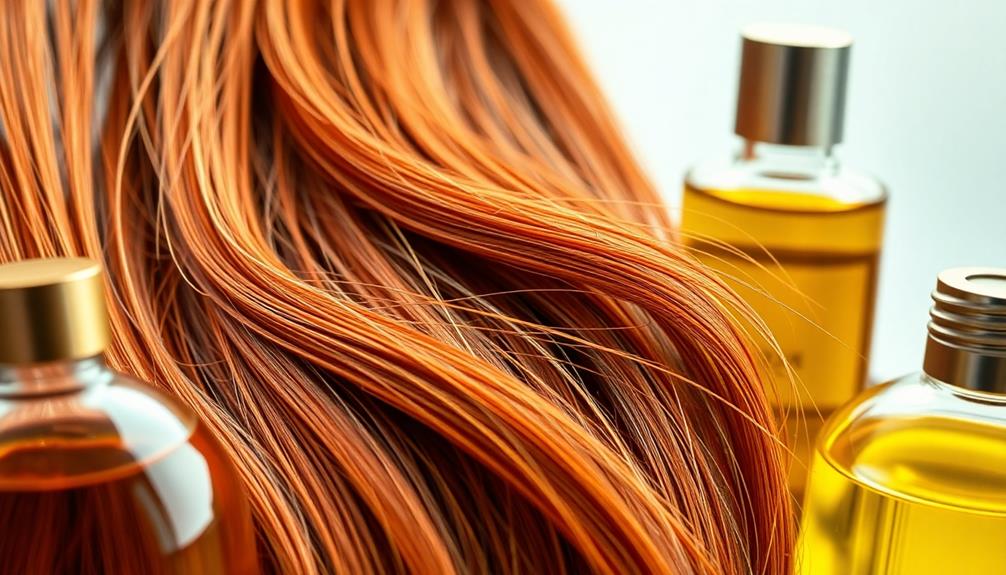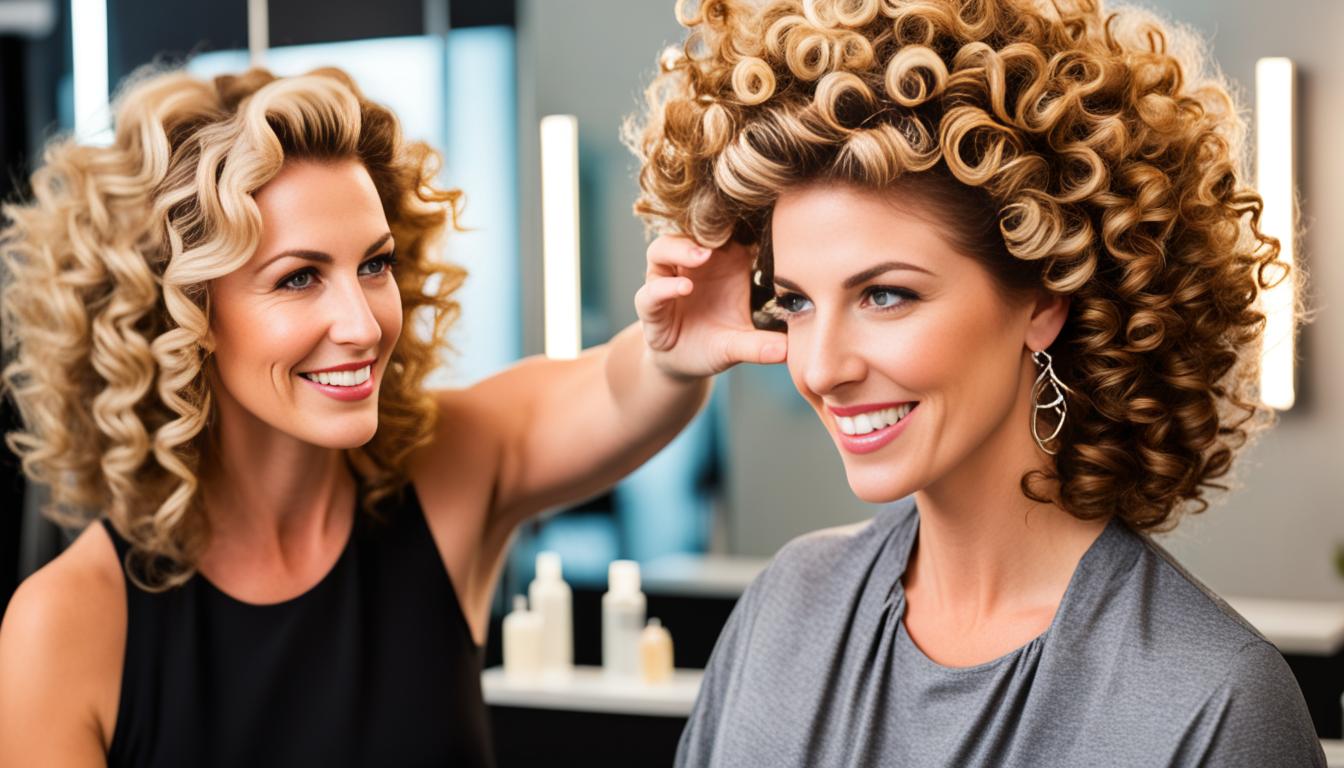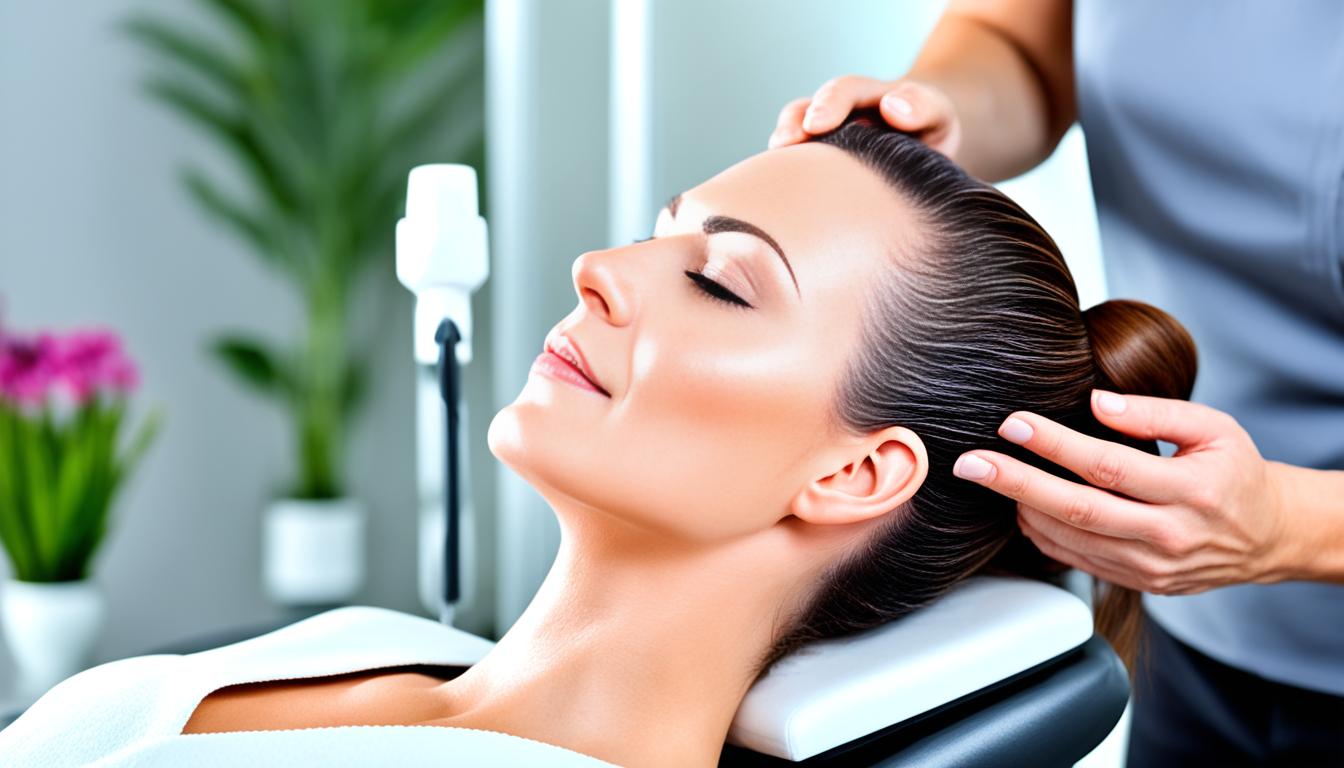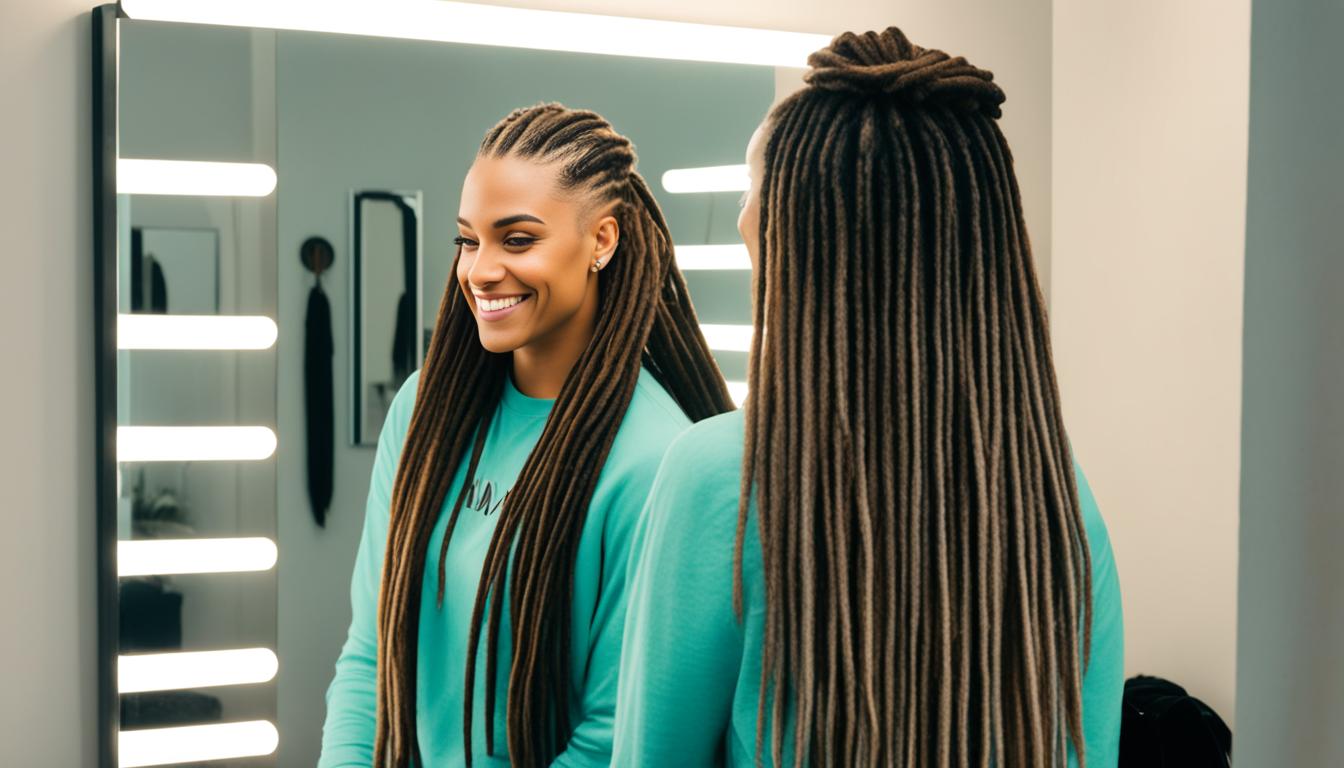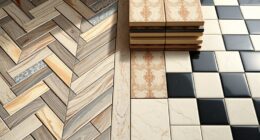To keep your hair strong and resilient, it's essential to understand hair bonds, mainly disulfide and hydrogen bonds. Disulfide bonds provide structure, while hydrogen bonds allow temporary changes in texture. Damage from chemicals and heat can greatly weaken these bonds, leading to breakage. To combat this, consider bond-building treatments that repair and enhance your hair's elasticity. Incorporate keratin treatments for added strength and moisture retention. Follow up with proper care, using sulfate-free products and regular trims to remove split ends. There's more to discover about improving your hair's health and style, so let's explore further tips and techniques.
Key Takeaways
- Hair bonds, primarily disulfide and hydrogen bonds, are crucial for strength and resilience; damage can be repaired with bond-building treatments.
- Regular use of keratin treatments replenishes lost proteins, enhancing hair strength and elasticity while repairing damage at the molecular level.
- To maintain healthy hair, avoid excessive chemical treatments and protect hair from environmental stressors like UV radiation and pollution.
- Utilize heat protectants when styling to minimize damage from high temperatures, which can disrupt hair bonds and lead to brittleness.
- Incorporate precision cutting techniques to eliminate split ends and maintain hair health, enhancing styling versatility and overall appearance.
Understanding Hair Bonds
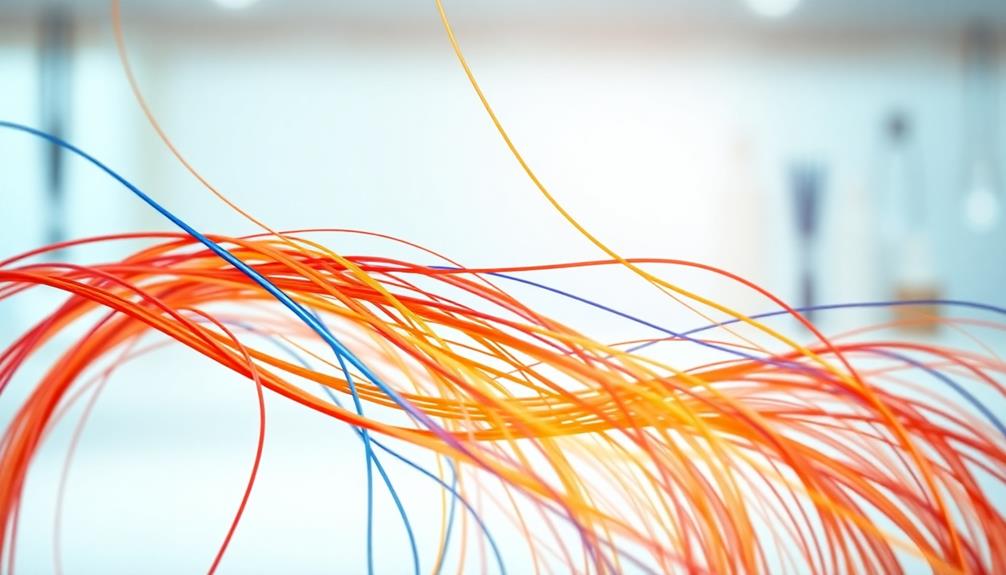
Hair bonds are the microscopic connections that hold your hair together, ensuring its strength and integrity. These bonds primarily consist of disulfide bonds and hydrogen bonds.
Disulfide bonds are strong and chemical in nature, providing your hair with the structural backbone it needs for strength and resilience. On the other hand, hydrogen bonds are weaker and allow for temporary changes in your hair's shape and texture, which is why styles can shift with moisture and heat.
Just as certain foods can impact the health of pets, such as how grapes are toxic to dogs, the health of your hair is also influenced by the products you use and the treatments you apply.
When hair bonds are damaged, often due to chemical treatments or heat styling, your hair can lose its integrity, leading to breakage and frizz.
Recognizing the importance of these bonds is essential for maintaining hair health. To support hair repair, look for hair care products specifically designed to target and rebuild these bonds.
Ingredients that promote bond repair can restore your hair's strength and enhance its overall health, making it look vibrant and manageable.
The Role of Keratin

Understanding hair bonds sets the stage for recognizing the importance of keratin in maintaining healthy locks.
Keratin protein is the primary structural component of your hair, forming long protein chains that contribute to its strength and elasticity. Without sufficient keratin, your hair can become brittle and prone to breakage.
Here are four key roles keratin plays in your hair care routine:
- Formation of Disulfide Bonds: Cysteine, an amino acid found in keratin, creates disulfide bonds that give your hair its shape and durability.
- Repairing Damaged Hair: Hydrolyzed keratin in treatments penetrates the hair shaft, helping to repair damage at a molecular level.
- Enhancing Strength and Elasticity: A balanced amount of keratin helps maintain vibrant, healthy hair by preventing brittleness.
- Supporting Treatments: Keratin treatments work by replenishing lost proteins, making your hair more resilient to styling and environmental stresses.
Incorporating keratin into your hair care routine is essential for achieving strong, healthy hair.
Causes of Hair Damage
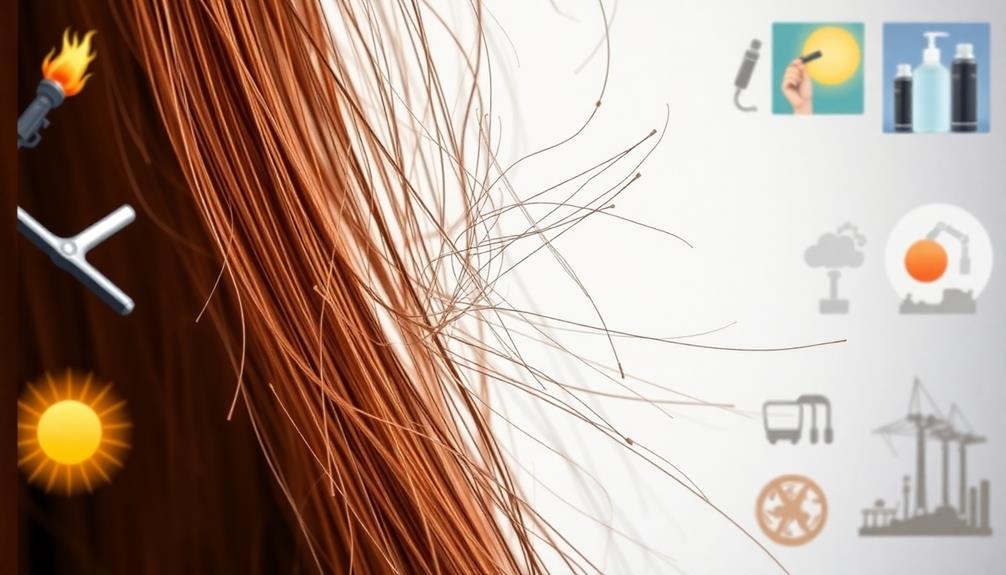
You mightn't realize how much damage chemical treatments can do to your hair, weakening its bonds and increasing breakage.
Environmental stressors like UV rays and pollution also play a significant role in degrading your hair's protective layer.
Plus, using high-heat styling tools can lead to thermal damage, further compromising the strength of your hair bonds.
Chemical Treatment Impact
What happens to your hair when it undergoes chemical treatments like coloring, bleaching, or perming? These processes can greatly weaken your hair, leading to damaged hair bonds and increased breakage.
For instance, bleaching disrupts disulfide bonds, breaking sulfur connections in your hair's keratin structure and compromising its integrity. Additionally, chemical treatments often create temporary hydrogen bonds that are easily broken, resulting in a loss of shape and texture.
Regular use of products like Shark Flexstyle can help minimize the damage by promoting better styling practices.
Here are four critical impacts of chemical treatments on your hair:
- Reduced Strength: Excessive use can lower hair strength by up to 50%, making it more prone to damage.
- Dryness: Harsh chemicals strip moisture, leading to dry, brittle strands.
- Dullness: Your hair may lose its natural shine and liveliness.
- Tangles: Weakened bonds can cause hair to become tangled and difficult to manage.
Regular exposure to these chemical processes can severely affect your hair's health, so it's crucial to reflect on the long-term effects of treatments like hair coloring and bleaching.
Prioritize hair care to maintain resilience against damage.
Environmental Stressors
Chemical treatments can greatly weaken hair bonds, but environmental stressors also play a major role in hair damage. UV radiation can dry out your hair and make it brittle, breaking down essential hair bonds. Additionally, harmful substances like sugar can lead to overall health issues that may indirectly affect hair quality.
Pollution and harsh chemicals in your surroundings lead to oxidative stress, likewise compromising your hair structure. Hidden Dangers of DIY Dental Treatments for Kids such as unsterilized tools can also parallel the risks associated with improper hair care. Moreover, fluctuations in humidity disrupt the hydrogen bonds in your hair, causing frizz and loss of shape.
Extreme temperatures, whether hot or cold, can degrade both hydrogen and disulfide bonds, leaving your hair vulnerable. If you frequently swim in chlorinated pools, you might notice your hair becoming more damaged. Chlorine strips away natural oils, making your hair more susceptible to breakage and additional environmental factors.
To protect against future damage, consider using leave-in conditioners or UV protectants. These products can help shield your hair from environmental stressors and maintain its integrity.
Heat Styling Damage
Heat styling, while a popular way to achieve sleek or voluminous looks, poses significant risks to your hair's health. When you use tools like flat irons and curling wands, they can exceed temperatures of 450°F, leading to serious heat styling damage. Here's what happens:
1. Weakened Hydrogen Bonds: High heat disrupts these temporary bonds, causing a loss of elasticity and strength over time.
Additionally, understanding the importance of applying consistent techniques can help minimize damage, similar to how brewing techniques affect flavor profiles in coffee.
2. Loss of Moisture Content: Your hair can lose up to 50% of its moisture, making it dry and brittle.
3. Irreversible Damage to Disulfide Bonds: These essential bonds maintain your hair's structure. Damage here leads to long-term fragility and increased breakage and split ends.
4. Importance of Heat Protectant Products: Using these can reduce heat exposure by up to 50%, helping preserve your hair health and strength.
To maintain your hair's resilience, always use heat protectant products before styling.
Benefits of Bond-Building Treatments
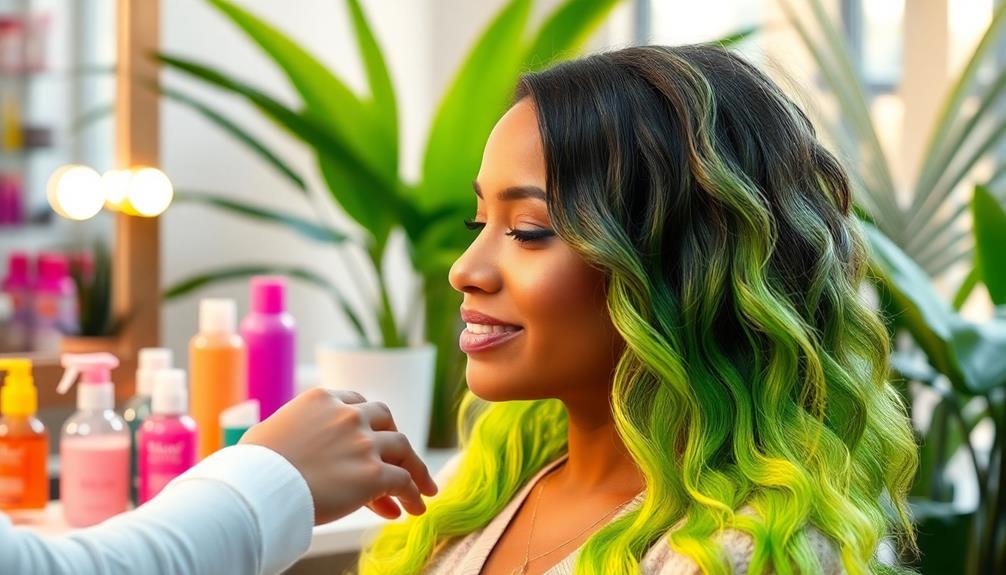
Bond-building treatments offer a range of benefits that can transform your hair health. These treatments considerably reduce breakage by strengthening weakened hair bonds, making your strands healthier and more resilient.
If you've been dealing with damaged hair, you'll appreciate how these products enhance elasticity, allowing your hair to withstand styling and manipulation without the usual stress and strain. Additionally, maintaining high vibrational energy during your hair care routine can contribute to overall hair wellness, as emphasized by Abraham Hicks on sleep and dreams.
Moreover, bond-building treatments improve the shine of your hair. Healthier hair reflects light better, giving you that sought-after glossy finish.
If you color your hair, these treatments play an essential role in preserving hair color by preventing fading, ensuring that your color stays vibrant and lasts longer.
Additionally, advanced bond-building technologies provide heat protection, which is crucial when you frequently use styling tools. This extra layer of defense contributes to the overall health of your hair, preventing damage that can arise from high temperatures.
How to Use Treatments

Effective application of bond-building treatments is essential for achieving ideal results. To help restore strength and moisture retention in damaged hair, follow these steps for optimal use of bonding treatments:
- Apply on Damp Hair: Start by applying the product to damp hair, ensuring even distribution for maximum effectiveness. Incorporating HEPA filtration can enhance air quality during your hair care routine, as clean air contributes to overall hair health.
- Follow Timing Instructions: Leave the treatment on for the recommended duration, typically between 5 to 30 minutes, as indicated on the product label.
- Incorporate into Your Routine: Use these hair treatments once a week or as needed, especially after chemical services or excessive heat styling, to maintain hair's resilience.
- Post-Treatment Care: After rinsing, follow up with a sulfate-free shampoo and conditioner. This preserves the integrity of hair bonds and enhances moisture retention.
For deeper care, consider using a pre-wash mask like the Prodigio Regenerating Treatment to penetrate hair fibers effectively.
Combining treatments such as the Palmers Amino Bonding Complex with the Bonding Healing Oil and Bonding Conditioning Masque can provide thorough care, addressing multiple aspects of hair health.
Hair Care for Color and Extensions
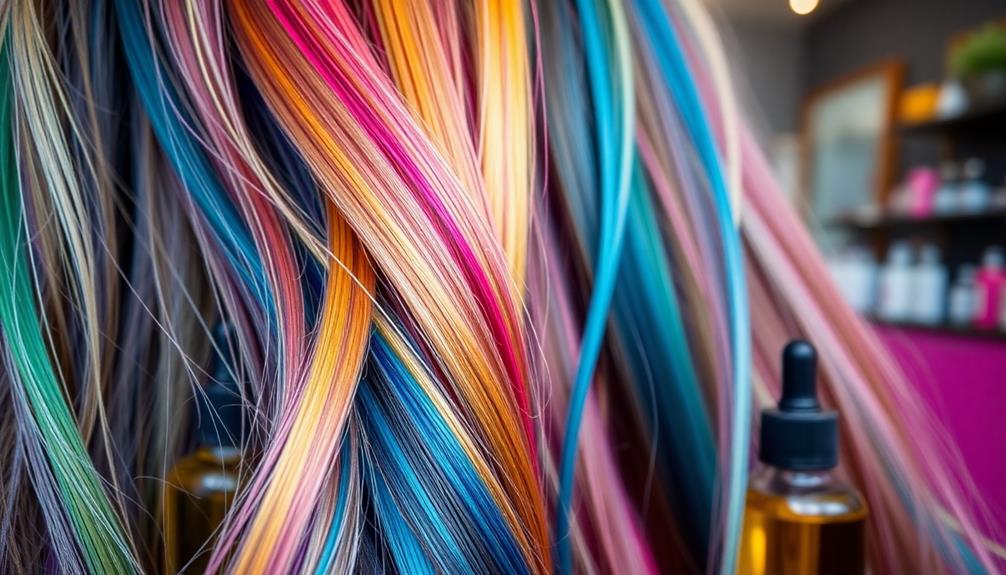
When it comes to hair care for color and extensions, maintaining vibrancy and longevity is key.
Utilizing best shampoos for highlighted hair can help protect your color investment while also ensuring that your extensions blend seamlessly with your natural hair.
You need to focus on using the right products for color-treated hair and develop a regular care routine for your extensions.
Color Maintenance Techniques
Maintaining vibrant hair color requires careful attention and specific techniques, especially when you have extensions. To keep your color looking fresh and prevent fading, follow these essential tips:
1. Use sulfate-free products: Sulfates can strip away both color and moisture, leading to quicker fading. Opt for sulfate-free shampoos and conditioners to preserve your vibrant hair.
Incorporating products with glycolic acid benefits can enhance overall skin health, which is beneficial for those with sensitive scalps.
2. Incorporate color-protecting products: Look for products that contain UV filters and antioxidants. These help shield your hair from environmental damage, which can weaken bonds and dull color.
3. Schedule regular touch-ups: Aim for weekly touch-ups every 4-6 weeks, depending on your hair growth rate. This keeps your roots looking fresh and maintains the overall vibrancy of your hair color.
4. Minimize heat exposure: Extensions can dry out and lose color faster than natural hair. Use heat tools sparingly and always apply a heat protectant when styling.
Extension Care Essentials
Caring for your hair extensions is essential to keep them looking vibrant and natural. Start by choosing the right shade that complements your skin tone; this creates harmony in your overall appearance.
Regular maintenance is critical, especially for color-treated hair extensions. Use sulfate-free shampoos and conditioners to preserve vibrancy and prevent fading. Additionally, incorporating herbal teas known for their calming effects, like chamomile, can promote overall well-being, which may enhance how you feel about your hair and appearance natural anxiety relief.
Depending on your hair growth rate, plan touch-ups every 4-6 weeks for a seamless look. Different types of bonds, like clip-in, tape-in, and sew-in, require specific installation techniques to guarantee a secure fit and natural blending with your existing hair.
Daily extensions care should include gentle brushing and washing to avoid tangling and damaged hair. Be sure to use products specifically designed for color protection to maintain the health and appearance of your extensions.
Precision Cutting Techniques
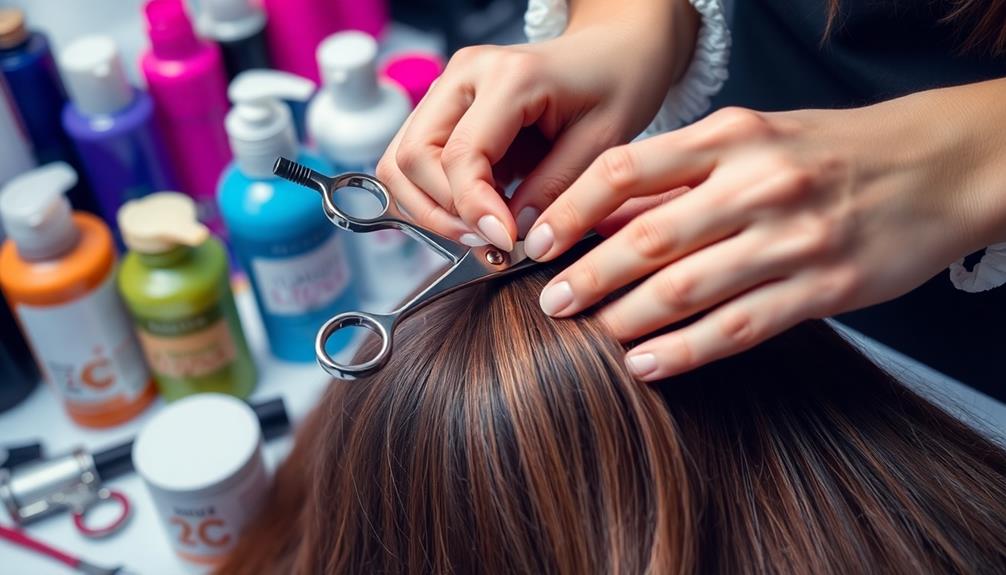
Precision cutting techniques are crucial for achieving sharp, defined styles that highlight your hair's natural texture and movement. By utilizing specific cutting angles and methods, these techniques help you attain a look that not only flatters your face shape but also promotes hair health.
Incorporating essential oils for hair growth into your hair care routine can further enhance the benefits of precision cutting by nourishing your scalp and stimulating hair follicles.
Here are four key benefits of precision cutting techniques:
- Removes Damaged Hair: Regular precision cuts eliminate split ends, preventing further damage and helping your hair grow stronger and healthier.
- Enhances Features: Tailored cuts are designed to enhance your unique features, ensuring your hairstyle complements your overall appearance.
- Improves Styling Versatility: Precision cuts allow for easier management of various hair types, giving you the flexibility to create multiple styles with minimal effort.
- Specialized Tools: Techniques often involve using specialized tools like texturizing shears and razors, which create seamless blends while maintaining length.
Incorporating precision cutting techniques into your routine can lead to healthier hair and a more polished look.
Frequently Asked Questions
Do Hair Bonders Really Work?
Yes, hair bonders really work! When you use them consistently, they can markedly reduce breakage, enhance strength, and improve shine. Incorporating these treatments into your routine makes a noticeable difference in your hair's health.
How Can I Make My Hair Bond Stronger?
To make your hair bonds stronger, use bond-building treatments and protein-rich products. Reduce heat styling, maintain hydration with ceramides, and schedule regular trims to minimize damage, ensuring healthier, more resilient hair over time.
What Are the 4 Types of Bonds in Hair?
Imagine your hair as a delicate tapestry. It's held together by four bonds: disulfide, hydrogen, ionic, and van der Waals. Each plays an essential role in maintaining your hair's strength and resilience.
How to Rebuild Bonds in Hair?
To rebuild bonds in your hair, use bond-building treatments, incorporate protein-rich products, minimize heat styling, enhance moisture with hydrating ingredients, and schedule regular salon treatments for deeper restoration and improved hair health.
Conclusion
Just like a sturdy bridge relies on its beams to stand tall, your hair needs strong bonds to thrive. By understanding how these bonds work and embracing bond-building treatments, you can restore your hair's resilience and shine. Remember, caring for your hair is a journey, not a destination. With the right techniques and products, you can nurture each strand, transforming your hair into a vibrant crown that reflects your unique beauty. Embrace the power of strong hair bonds!
